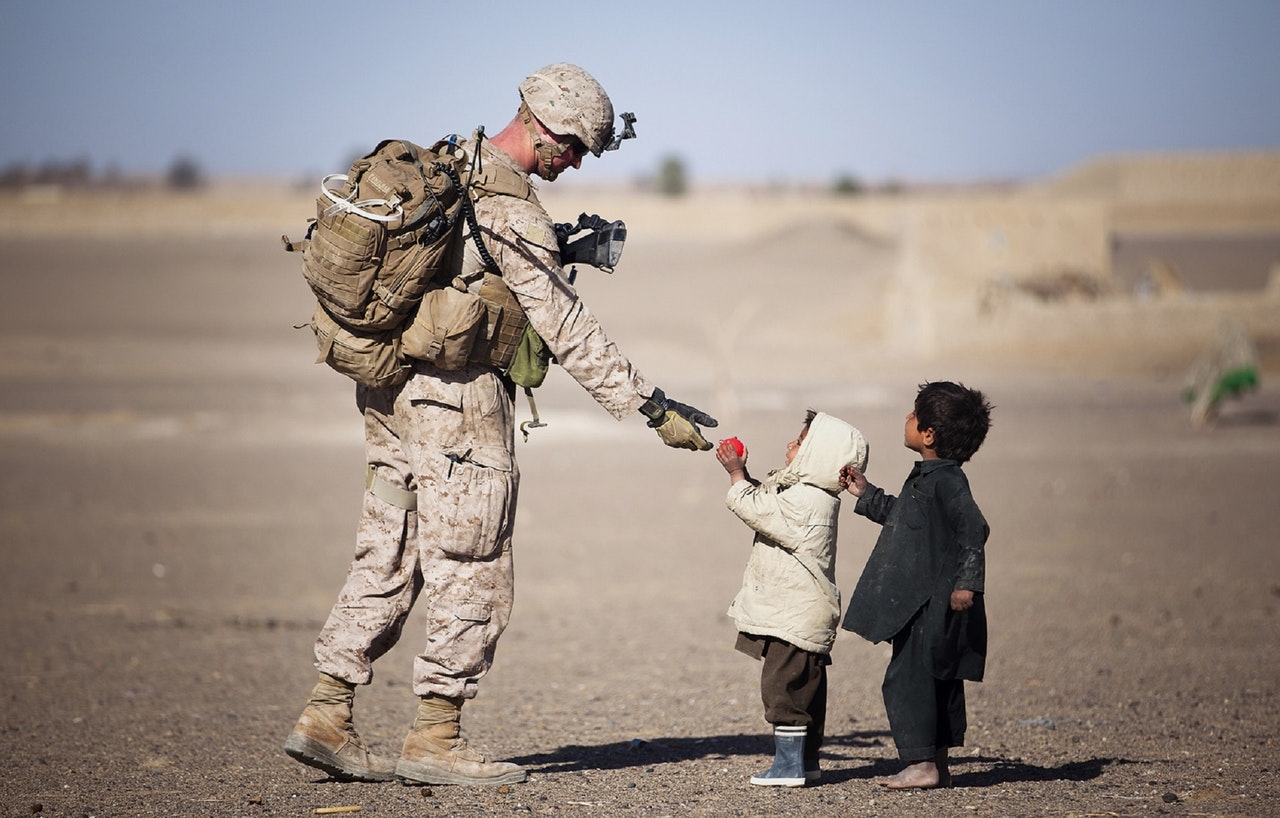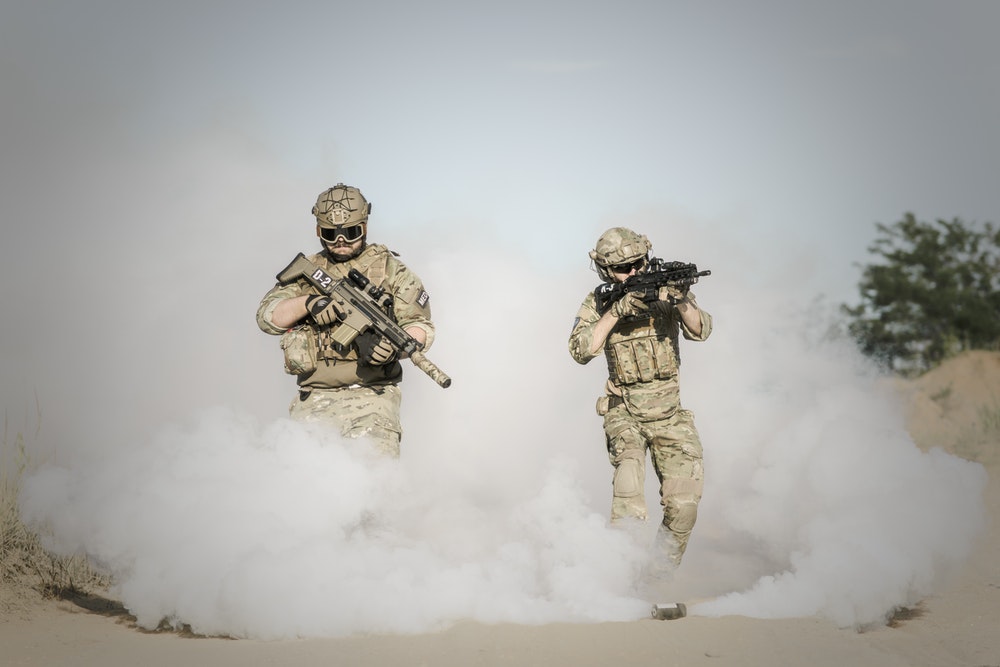Article by Dr Eve Massingham, Law and the Future of War research group, and
Professor Dale Stephens, Professor of Law at The University of Adelaide Law School.
The Common Article 1 obligation to “ensure respect” for international humanitarian law (IHL) has become a topic of considerable reflection and debate. The extent to which States must influence others to respect the Conventions is a thorny and unresolved issue. Yet, untangling the debate is particularly important for those operating in coalition environments because it raises a number of questions relevant to military training and compliance.
Prime among these questions are, whether ensuring respect requires military forces to adopt legal positions that differ from their States’ views on IHL to meet a third-party’s standard? Does Common Article 1 require compliance with treaty obligations that a State has not ratified where a partner State is party to that treaty? Does it only apply to internal obligations within one’s own forces or does it have an external application regarding obligations to “correct” apparent non-compliance by other State Parties?
While the strict legal content of the obligation contained within CA1 may be contentious, it is also abundantly clear that as a concept it has animated thinking. In the context of training and applying IHL in coalition operations, the concept of CA1 has much to offer.
The Meaning of Common Article 1
The meaning of Common Article 1 is not settled. Although there seems to be some general agreement about the actions which States take to respect IHL (indeed by themselves comply with the provisions of IHL), the parameters of ‘ensuring respect’ for IHL as a legal obligation remain contested. The question of whether the Article created a specific legal obligation is not new. Kalshoven explored this idea in his 1999 work, for example. However, the ongoing ICRC project updating the Commentaries to the Geneva Conventions has brought this provision to the fore and sought to provide some clarity.
In our view, the question is not about whether Common Article 1 creates a legal obligation, but rather what that legal obligation looks like. Pursuant to the Vienna Convention on the Law of Treaties, the drafting history of Common Article 1, the case law discussing Common Article 1 and the Article’s linkages to other provisions of international law all have been analysed to help find clarity (see ICRC Commentary, Massingham, Massingham and McConnachie, ch 1). We know that the International Court of Justice’s approach has not been to always read provisions that require States to take actions as absolute, but also that it does not dismiss them as void of any meaning. The ICJ, in interpreting the provision of the Genocide Convention to prevent genocide, noted that while success wasn’t a requirement of a State response, the State should undertake actions “reasonably available to them” ([430]).
There are concerns from States that this interpretation of the Common Article 1 obligation is too expansive and requires them to do the impossible—to take action every time IHL is violated, by whomever. However, as Focarelli pointed out—and we are not aware of anyone who disputes this—States clearly are not obliged to take all possible measures to prevent or respond to every violation of IHL. At most, States are required to use their capacity and influence to bring about an “attitude of respect” for IHL (1952 Commentary p 26).
As Massingham and McConnachie conclude it is not possible to create a “clear list of steps that States could take in a variety of situations to demonstrate that they are ensuring respect for IHL” (p 265). Reality is messier than that, like much of international law. But that does not mean that the obligation in Common Article 1 should be dismissed. Rather, collating State practice that gives effect to Common Article 1—whether explicitly or not—allows us to see what is possible, and what is being done by States. Ultimately, the goal of the ensure respect provision is to require that States be engaged and responsive: “engaged in the global discourse and … cognisant of and responsive to international developments” (p 271). States must know what is going on in the global community. They must respond to situations as needed. This is particularly the case when it comes to interoperability on the battlefield.

Coalition Battlefields and “Ensuring Respect” Obligations
As outlined above, the duty to ensure respect does not create implacable obligations to do the impossible. Moreover, there is little evidence that this is being demanded in the battlespace. However, it is equally clear that within coalition operations (which occur frequently today) the “ensuring respect” concept has found indirect practical realization. General IHL training and specific pre-deployment classes highlight the laws and interpretations to which coalition partners are subject. Notably with respect to Australia, it has long been recognized that the United States is not a party to the same treaties that bind Australia in operations. These include Additional Protocol I, the Landmines Convention, the Cluster Munitions Convention, and even the Law of the Sea Convention. Despite this, Australia and other coalition partners spend considerable time ensuring legal and policy interoperability such that all coalition partners can be both legally compliant and operationally effective (see also Stephens’ chapter in Linton et al (eds)).
Achieving alignment in this manner means that policy choices are made about rights / obligations contained within the legal instruments that will be fully exercised or that will be undertaken only in certain circumstances. Coalition cohesion is a goal and value in its own right and thus accommodations are usually made to ensure this cohesion is maintained. It is clear that U.S. military officers, for example, are usually aware of legal obligations and restrictions that countries like Australia have and will foreshadow plans and ideas that permit legal compliance and yet effective partnering.
It is also clear that a professional military ethos develops in such circumstances where interpretative choices are made to legal issues that permit common application. This is not new, law itself is inherently indeterminate, but it is the development of the ethos that provides a background reference for ensuring alignment. Mechanisms such as constructivism, norm internalization, virtue ethics, institutional credibility, military culture, and even an internal and external sense of legitimacy that underpins this alignment (see generally Roots of Restraint, and Behaviour in War).
Each of these mechanisms apply to provide a lens of interpretation to the law, or otherwise shape policy decisions as to whether to press a particular legal point or not. Professional identity as to what it means to be a modern soldier informs choices that are then made in the battlespace. Choices of forbearance, or mercy, or restraint are made in order to satisfy a deeper register of legitimacy. This is not new. Terms like “chivalry” have always carried with them a sense of professional duty. These mechanisms are modern day equivalents that explain and fulfill broader obligations of fidelity to a professional ethos and loyalty to the public in whose name modern military forces act.
Legal Interoperability and “Ensuring Respect”
It is wrong to conclude that “ensuring respect” and legal interoperability in coalition operations are the same thing. They are not. However, the goals of “ensuring respect”—to require States to be engaged and responsive—do find practical realization as States seek to work together in coalition operations. This, in turn, provides a foundation for the delivery of training to armed forces members, especially in a pre-deployment context. Understanding values and motivations, especially what it means to be a professional warrior with a dedicated ethos of IHL compliance has underpinned ICRC research in recent years. There is much to commend in this research. Indeed, it has resonance in the context of coalition operations and the goals of effective legal inter-operability, and the practical realization of “ensuring respect.”

Answering the Questions
In answer to the questions posed at the beginning of this piece, “ensuring respect” does not require that the military force adopt different views from its State. However, it may mean that such legal views are not pressed in circumstances where they could be in order to achieve a desired strategic outcome.
Does it require compliance with treaty obligations that a State has not ratified where a partner State is party to that treaty? No, it doesn’t require that a military force adopt a legal view that its State has expressly not adopted. It can mean, however, that as a matter of policy, the State operates consistent with coalition partners views concerning their legal obligations in order to assure coalition coherence.
Does the obligation to “ensure respect” only apply to internal obligations within one’s own forces or does it have an external application regarding obligations to “correct” apparent non-compliance by other State Parties? The answer principally relates to a State’s internal obligations and very indirectly, through the process of ensuring a measure of legal interoperability to achieve mission success, can influence the views other States may have concerning their own interpretations that they may ‘correct’ themselves.
It is in these ways that we would assert that Common Article 1 has much to offer.
This article appeared on Articles of War, published by the Lieber Institute, US Military Academy, West Point. It is informed by the ongoing research of the Law and the Future of War Research Group. The views and opinions expressed herein are those of the authors, and do not necessarily reflect the views of the Australian Government or any other institution.



